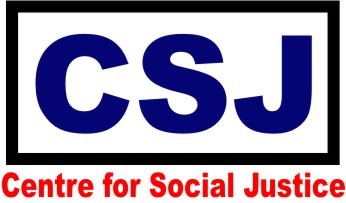July 2024 CPI and the Right to an Adequate Standard of Living
July 2024 CPI and the Right to an Adequate Standard of Living
-
September 10, 2024
- Posted by: Center for Social Justice

National Inflation Profile
The recently published Consumer Price Index (CPI) for the month of July 2024 by the National Bureau of Statistics (NBS) reveals a slight drop in the headline inflation rate by about 0.8% points from 34.19% in June to 33.40% in July 2024. The 12 months preceding the latest report had seen the inflation figures rise consistently. Comparing this with the same period last year, the headline inflation for July 2023 was 24.08% implying a 9.32% points inflation gap within 12 months. On a month on month basis, the headline inflation is 2.28% as against 2.31% in June 2024. This simply implies a reduction in the rate of increase of average prices.
Sub-nationals’ Contribution to Inflation Profile
Further disaggregation shows the contribution of state fluctuations to the overall national price index for the month of July 2024. On a year-on-year basis all item (prices of all items irrespective of classification) inflation rate was highest in Bauchi (46.04%), Jigawa (40.77%) and Kebbi (37.47%); whereas they were lowest in Benue (27.28%), Delta (28.06%) and Borno (28.33%). However, on a month-on-month basis the highest increases in inflation were recorded in Abuja (3.91%), Borno (3.84 and Enugu (3.76%); while the slowest rise was recorded in Taraba (0.17%); Kwara (0.62%) and Ondo (0.91%).
Similarly, food inflation in the country on a year-on-year basis is highest in Sokoto (46.26%), Jigawa (46.05%) and Enugu (44.06%). It is lowest in Adamawa (33.48%), Bauchi (35.10%) and Benue (36.41%). On the other hand, the month-on-month basis top 3 fastest rises in food prices is recorded in Borno (5.07%), Sokoto (4.99%) and Enugu (4.17%). It is lowest in Kwara (0.51%), Taraba (0.56%) and Ondo (0.68%).
Urban and Rural Inflation
Urban inflation contributes more to the high inflation figures. Urban inflation currently stands at 35.77%, while rural inflation is 31.26%. This may not be unconnected to the forces of demand and supply. Urban areas command more resources, hence higher demand. Naturally, prices will rise when available resources are chasing few/available goods/services. Relating this with the major drivers of inflation (food and non-alcoholic beverages, housing, water, electricity, gas, other fuel, clothing and footwear, transportation etc.); it is clear that their demand is higher in urban areas than in the rural. For instance, in the rural areas, people grow significant portions of the food they consume, they live in their own houses, their expenses on utilities like water and electricity is low because they have alternative sources for them, and in critical situations, they can do without them. More so, effective demand is want backed by resources (ability to pay) and in most cases, these resources are not available to rural dwellers. Several studies have shown that bulk of rural dwellers are poor.
The Right to Adequate Standard of Living
The 1999 Constitution of the Federal Republic of Nigeria as amended (Constitution) in the “Fundamental Objectives and Directive Principles of State Policy” provides that the security and welfare of the people shall be the primary purpose of government.[1] In the S.16 (2) (d), the Constitution provides “that suitable and adequate shelter, right to food and food security, reasonable national minimum living wage, old age care and pensions, and unemployment, sick benefits and welfare of the disabled are provided for all citizens”. The Constitution also made provisions for objectives in promotion of education and health.
Furthermore, Nigeria has obligations under article 11 (1) of the International Covenant on Economic, Social and Cultural Rights (ICESCR) vis: “The States Parties to the present Covenant recognize the right of everyone to an adequate standard of living for himself and his family, including adequate food, clothing and housing, and to the continuous improvement of living conditions..”.[2] This obligation is a reaffirmed in the standard setting Universal Declaration of Human Rights: “Everyone has the right to a standard of living adequate for the health and well-being of himself and of his family, including food, clothing, housing and medical care and necessary social services, and the right to security in the event of unemployment, sickness, disability, widowhood, old age or other lack of livelihood in circumstances beyond his control”.[3]
Clearly, these national and international standards emphasize the rights to adequate food, clothing and housing as continuous improvement of living conditions as critical elements of the right to an adequate standard of living. The empowering rights of education and health also feature in the detrmi9nation of the standard of living.
Driver(s) of Inflation in Nigeria
The greatest contributor (driver) of price increases within the period is Food and non-alcoholic beverages at 17.30%. Other top contributors include Housing, water, electricity, gas & other fuel (5.59%); clothing and footwear (2.55%); transport (2.17%); and Furnishing and Household equipment and maintenance (1.68%). Education and health followed with 1.32% and 1% respectively. The month-on-month figures also follow similar pattern contributing 1.18%, 0.38%, 0.17%, 0.15%, 0.11% and 0.09% respectively. With food inflation reported as 39.53%, a reduction from 40.87% in the previous month further reaffirms food price inflation as a major force in driving general inflation in the country. On a year-on-year basis, food inflation as at July 2023 was 26.98%.
Essentially, food, housing and clothing – the critical components of the right to an adequate standard of living are the first three major drivers of inflation. This is followed by transport in the fourth position, furnishings and household equipment in the fifth while education and health take the sixth and seventh position respectively. Transport is like a cross cutting issue affecting all the other contributors to inflation while furnishing tracks back to the right to adequate housing considering that a house is not just four walls and a roof. Education as an empowering right and the fulcrum for the validation of other rights took a major hit while health which is inextricably tied to the right to life is negatively affected. The right to life will be extinguished by the denial of health supporting conditions to the point of abrogation. It has been reported that average Nigerians spend up to 60% of their income on food,[4] leaving them with 40% of their income for all other expenditure. When all these critical elements of an adequate standard of living are buffeted by inflation, the implication is an upsurge of poverty and misery.
The Gender Dimension
Nigerian women and girls are the face of Nigerian poverty. Their numbers were higher among the poor before the galloping inflation. In a period of rising prices, coupled with unemployment and stagnated economic growth, the likelihood of women and girls earning income or salaries that keeps pace with the inflationary spiral is remote. High food inflation exerts undue pressure on the physical and mental of women and girls who are the managers of family food. The most recent NBS Labour Force Reports show that more women are unemployed than men. Therefore, the Nigerian inflation crisis affects women and girls disproportionately. The inflation driving policies (fuel subsidy removal and floatation of the naira) appear to be gender neutral, but in actual fact, they are based on structural discrimination which denies the existence of apparent discriminations.
Implication of the Continued Rise in Prices
The implication of the continued rise in prices, which only dropped slightly in July 2024, is that the reform measures in fuel subsidy removal and floating of the exchange rate – the main pillars driving inflation, were not properly thought through. The removal of fuel subsidy and floatation of the naira were arbitrary and whimsical, without empirical simulation, projections and fall back positions for course correction. There were no policy measures designed at the inception of the removal and floatation inbuilt in the reforms to stem the tide of inflation. Furthermore, the poor sequencing of the reforms ensured that Nigerians felt the maximum pain from an otherwise manageable economic policy reform. For over a year, the Monetary Policy Committee of the Central Bank of Nigeria has engaged in trial and error policies of raising interest rates and increasing the cash reserve ratio to no avail.
Citizens Reaction
Only recently citizens embarked on a 10-day (August 1st to 10th) nationwide #Endbadgovernance protest in Nigeria in which they decried among other things hunger and hardship in the land. About a month earlier, the federal government had announced reopening of the nation’s borders for a 150 days duty-free importation of food materials into the country in response to the escalating food prices. This response which is both adhoc and temporal does not come without a cost – significant loss of revenue to the government as well as a disincentive to local farmers who may not be able to favourably compete with the foreign products. This low level of food production in the country has been attributed to several factors including insecurity occasioned by activities of bandits and herdsmen in especially farming communities. Others include very low state investment on agriculture and lack of prioritization of agriculture over several years. High transportation cost transportation (including transportation of food) as a result of the removal petroleum subsidy without adequate plan to cushion the impact further exacerbates high cost of goods (including food) to a near crisis level. Also, the floating of the exchange rate resulting in the erosion of the value of the local currency in an import-dependent economy meant an increased cost of importation.
Conclusion and Recommendations
As at 2022, the NBS recorded that 133 million representing about 66% Nigerians are multidimensionally poor, that is, they are poor in two or more key indicators. With a high level of inflation, the numbers have increased. While the revision of the minimum wage is commendable, it is like a drop of water in a mighty ocean. Less than 5% of Nigerians are employed by government, hence the impact of the new minimum wage will likely not be enough to assuage the hardship occasioned by high inflation among others.
The claim by the CBN that the little drop in prices is as a result of the tightened monetary policies holds no water. It has no empirical foundation. Monetary tightening in a period of stagflation has never produced a reduction in price levels. Rater it accentuates the stagflation. It is therefore time to stop increasing critical rates.
The following actions are recommended for government, especially as it relates to the standard of living: Incentivize food production/agriculture as a means of encouraging farming and farmers; prioritize agriculture in state planning and increase agricultural investment; in the medium term, start building food buffer stocks against inflation and famine; make conscious effort to tackle issues of insecurity; including banditry and activities of herdsmen. Other recommendations are: Invest in alternative and cheaper sources fuel for transportation such as Compressed Natural Gas (CNG); stop the propaganda of CNGI and start the work in providing conversion kits, new buses and incentivizing dispensing the proliferation of pumps and stations. Finally, undertake a gender analysis of the reforms leading to the galloping inflation.
[1] S.14 (2) (b) of the Constitution of the Federal Republic of Nigeria 1999.
[2] International Covenant on Economic, Social and Cultural Rights, Adopted 16 December 1966 by General Assembly Resolution 2200A (XXI); entry into force: 3 January 1976, in accordance with article 27
[3] Adopted and proclaimed by General Assembly Resolution 217 A (III) of December 10,1948.
[4] See Buffer Stocks against Inflation. USDA (2023): Lower income countries spend much higher share of expenditures on food than higher income countries. Available online at: http://www.ers.usda.gov/data-products/chart-gallery/gallery/chart-detail/?chartld=107494 (last accessed on 6 May 2024)
